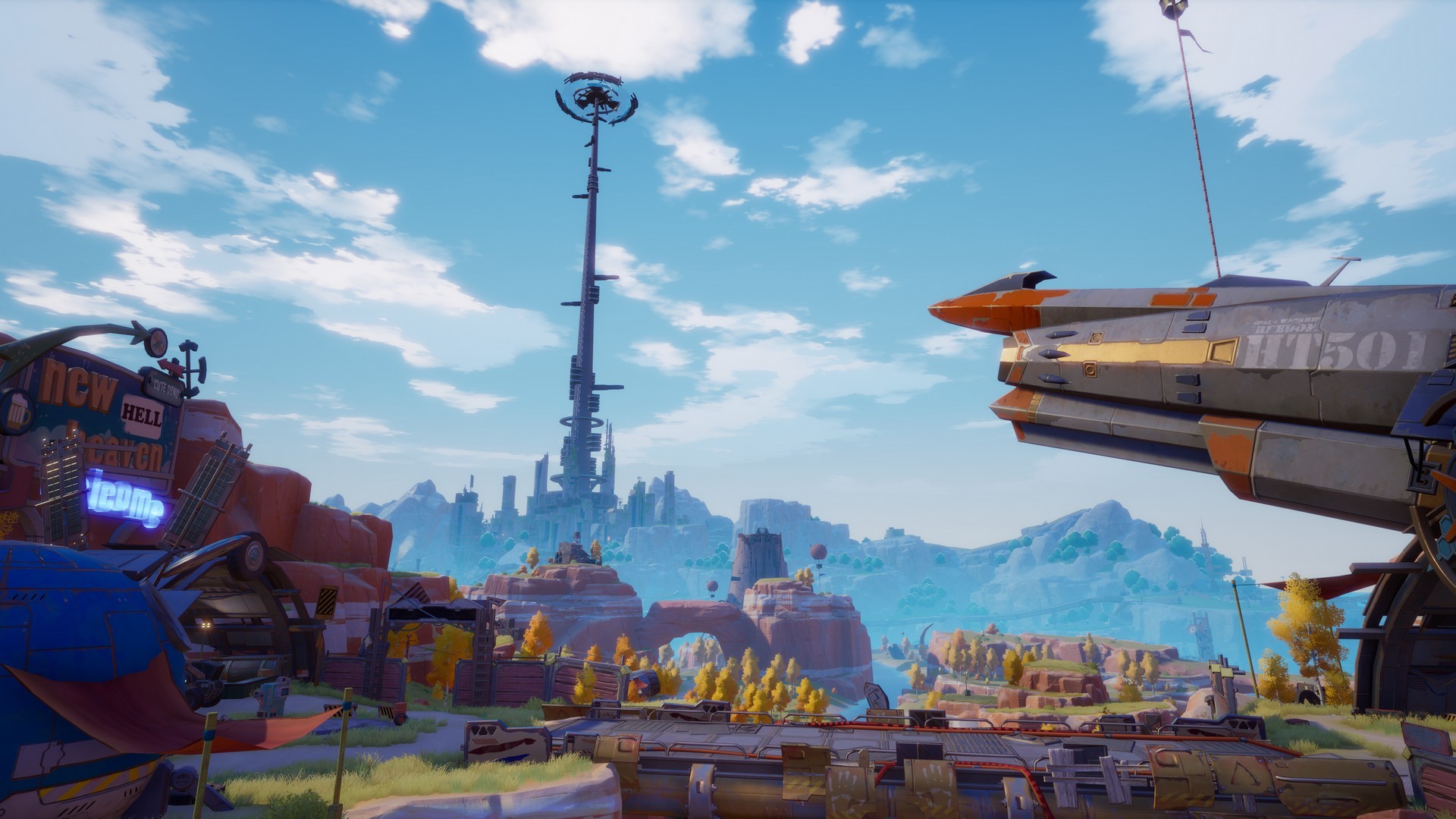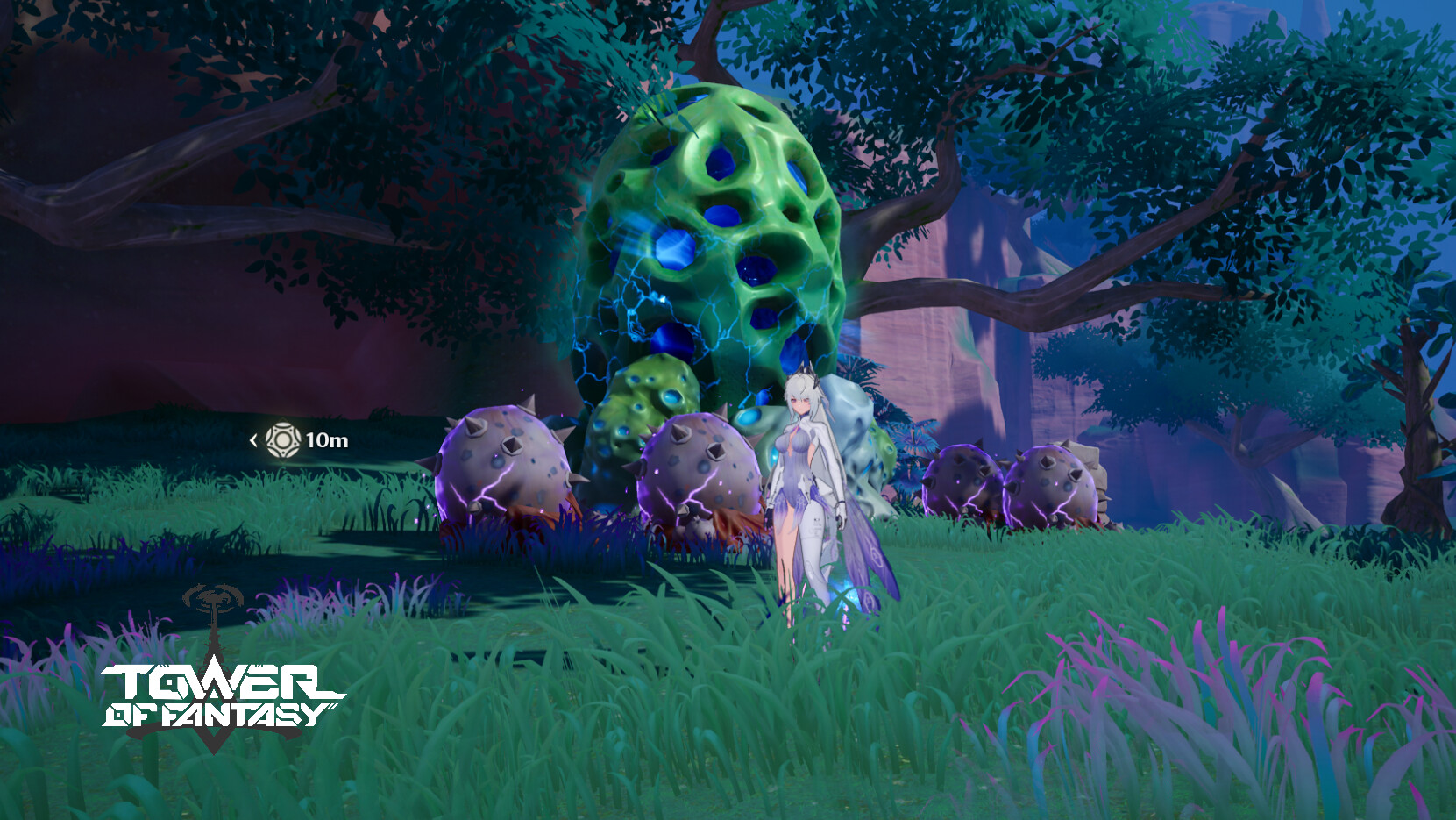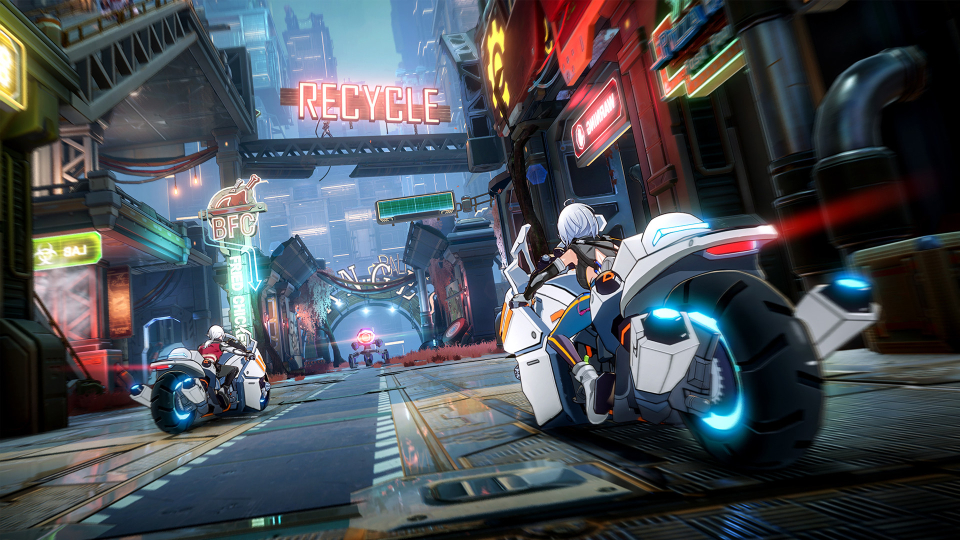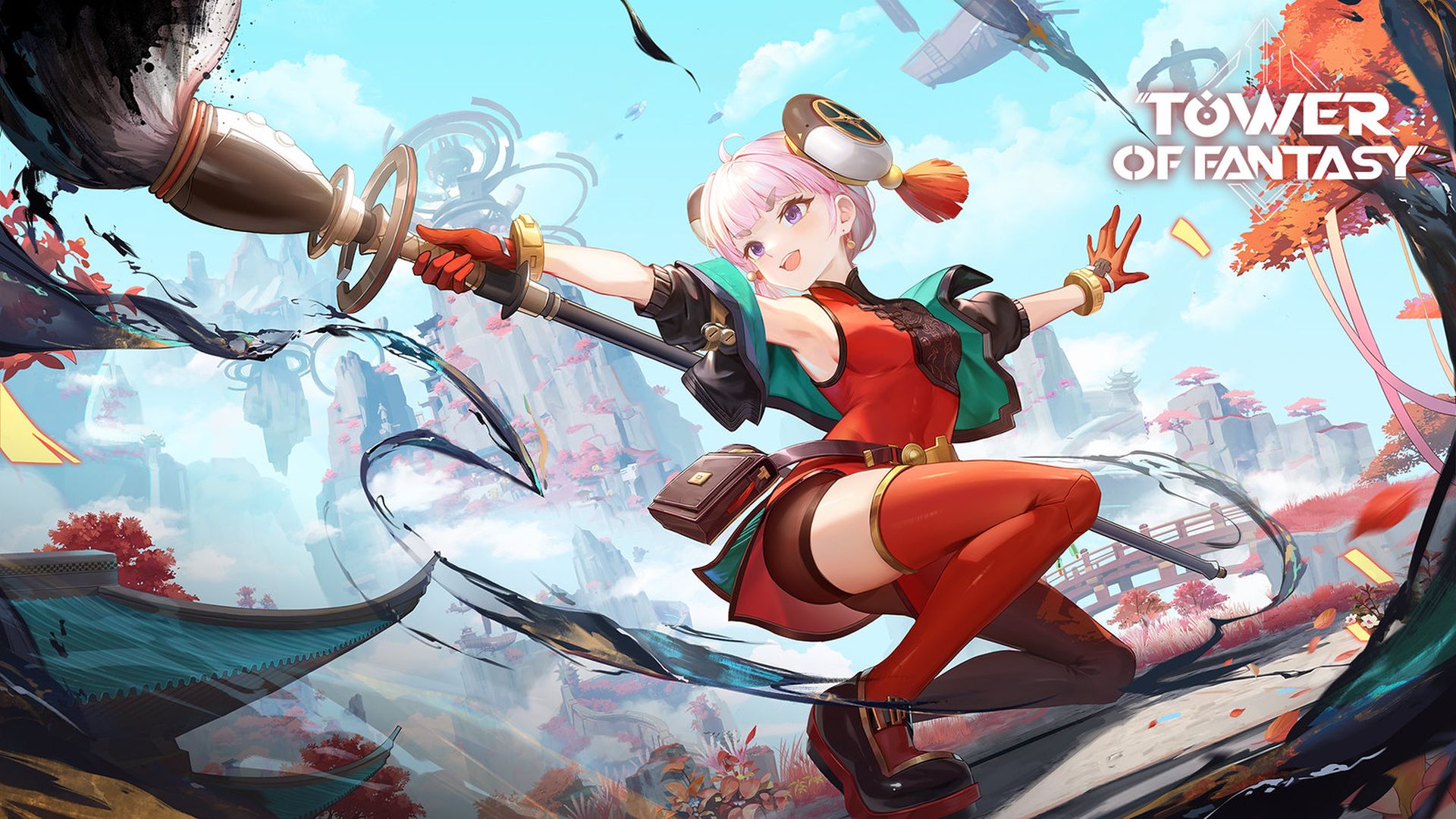It’s somewhat ironic that Genshin Impact would influence other games. After all, the project took some inspiration from The Legend of Zelda: Breath of the Wild, one of this generation’s most influential open-world games. The key part is a “some.” For all of its seemingly “derivative” elements, Genshin Impact has quickly established itself as a premier open-world action RPG with high production values, an intriguing story (even if its dialogue can get long-winded), and easily approachable combat layered with deep mechanics and memorable characters. Pretenders to the throne are thus not surprising.
After all, while gacha games have infiltrated several genres, from Arknights with its tower defense to Granblue Fantasy and Fate: Grand Order with their turn-based battles, very few games have had the budget or ambition to build an open-world action RPG. Bandai Namco’s Blue Protocol is still in the works. Wuthering Waves by the team that made Punishing Grey Raven is progressing steadily. However, one title got ahead of them all – Hotta Studio’s Tower of Fantasy.
“Perhaps worst of all is that despite its numerous faults, Tower of Fantasy looks like it has potential. “
On the surface, it sounded interesting. A sci-fi setting with deeper combat, a strong character creator that allowed for making one’s avatar, and activities like racing in futuristic vehicles – it definitely has some stuff going on. Unlike what Margin Call showcased, however, being first isn’t always ideal, especially when you’re trying to ape one of the very best in the genre.
Make no mistake – Tower of Fantasy is trying to be like Genshin. That’s apparent in some of its interface, which resembles miHoYo’s title when picking up items, the Synergies that result when equipping two weapons of the same element, or even the jetpack, which hovers more often than it boosts. Some of the “original” ideas it tries to push are from MMORPGs (like mounts and encountering other players in the wild), with many systems and mechanics seemingly existing to leverage the monetization model, bursting at the seams with stuff to sell you.
Perhaps worst of all is that despite its numerous faults, Tower of Fantasy looks like it has potential. However, even after a year of updates and new regions with their own extensive stories, it feels unpolished and haphazard, especially on PS5. It’s hard to remember a title, free to play or otherwise, which frustrated me this much to the extent of mentally checking out to progress forward.
The story starts with you, a wanderer, who arrives on Aida to explore and learn more about Omnium. Life on Earth isn’t going so great, and you’re part of a colony spacecraft run by the organization Hykros that seeks to establish life on the planet, with Omnium seemingly the ticket. After surviving an attack against mutated hounds and humans called Aberrants, the player separates from their companion (just like in Genshin Impact, where you choose either Lumine or Aether), their suppressor fails, and they fall unconscious.
“Even if no Paimon is doing all the talking for me, it still feels like my character is just a participant in this story rather than the focal point of it.”
They eventually wake up in Astra Shelter to meet Zeke and his sister Shirli with their memory gone. Thus begins the journey to catch up on what happened while assisting Shirli with her various tasks in this small slice of the Aesperia region. You even have a Paimon-esque companion in Mi-A, though thankfully, she’s more of a supporting character than a substitute for your voice.
Of course, it’s not long before things hit the fan. Opposed to Hykros are the Heirs of Aida, who believe Onnium is a curse and humans should go without it. Their leader plans to sabotage the Towers in the landscape that provide Omnium to the main Tower of Fantasy (I think), thus causing a disaster. You want to stop that, but also Shirli has been infected and seems to be turning into an Aberrant, so she’s taken away eventually.
The story starts innocently enough, but goes in several directions almost immediately, as you’re pushed and pulled along with Shirli’s antics. Then suddenly, you deal with Astra Shelter’s crises, learn of mysterious individuals, witness sibling drama between Shirli and Zeke, and explore strange ruins. It’s a lot of back and forth that doesn’t incentivize you to explore the world, as much as learn about the various systems on hand. Which is fine, but I would have appreciated doing that at my own pace. Even if no Paimon is doing all the talking for me, it still feels like my character is just a participant in this story rather than the focal point of it.
Another issue is that after you discover the crazy-looking hub for Hykros, the game suddenly catches you up on the rest of the story. Shirli becomes Nemesis or something (though her new look was spoiled plenty beforehand), and the Heirs of Aida are thwarted – it’s essentially one long highlight reel of cutscenes at 8x the speed. You’re led to Vera, the new region which offers an admittedly cool-looking pyramid city with highways that are way too desolate and traverse its surrounding deserts.
“At least Vera, particularly the city of Mirroria, looks good with the sci-fi aesthetic coming to life with its gorgeous skylines and neon-lit highways.”
You could go back to Aesperia and continue that story, which may end up happening anyway since you’ll be level-gated before long anyway. It all feels so slipshod and awkward to be downright annoying. I’m more than fine with the option to skip to the newest content, but a warning beforehand would have been nice.
While the characters aren’t too long-winded, their dialogue fails to captivate. The English cast does a decent job with the material (though Zeke sounds like he’s halfway to nodding off at any moment), but it’s nothing that pushes you to learn more, not even in Vera where things are happening at a rapid clip. The cutscenes and their direction, despite the overly wonky cinematography at times, are pretty good, even if one is seemingly ripped off a scene from Avengers: Age of Ultron (you’ll know it when you see it).
The art direction and music are also decent, though the former can be inconsistent. When first exploring Aesperia, everything looks enticing from a distance but is overtly shoddy and low detail up close. There’s also excessive pop-in for objects just a few feet in front of you and frame drops.
Some stuttering also occurred because the game may have been downloading content in the background, as indicated by a small blue line at the bottom of the screen during gameplay. Why doesn’t it do this before I start the game? Why is it just there, causing burn-in? Your guess is as good as mine. At least Vera, particularly the city of Mirroria, looks good with the sci-fi aesthetic coming to life with its gorgeous skylines and neon-lit highways.
“I didn’t get to the end-game of Tower of Fantasy, so I can’t say, and based on what I’ve played, it’s not looking like an enticing proposition.”
When it comes to combat, Tower of Fantasy at least tries to do more than Genshin. You can equip three different weapons, from dual blades and firearms to staves and spears, each with different combos, charged attacks, plunging attacks and special abilities. They also build up charge over time to unleash powerful attacks when switching, and each has advantages and disadvantages against enemies of other elements.
While there doesn’t seem to be animation-cancelling at times, and the auto-aim with some abilities and ranged attacks is iffy, hits felt responsive, and the animations were on point. Enemies don’t feel all that threatening as you keep upgrading weapons (despite the game claiming your attack score, gear score, and whatnot is not up to snuff), but they at least have some variety. Shout out to Phantasia, the Witch Time-style dodge that slows down everything and seems a little too good at times.
You quickly learn about Simulacra, which is how the game handles gacha. These unlock weapons but also characters, with the latter serving as skins. You can equip the weapons as your default character and upgrade them without much trouble, with various improvements unlocking other functions and perks. So what’s the point of the Simulacra, besides effectively having another skin?
The character creator has enough options for changing your look, so why? If you view the weapons as their characters, their skill sets are a far cry from whatever Genshin Impact, let alone Honkai: Star Rail or even Arknights, has to offer. I didn’t get to the end-game of Tower of Fantasy, so I can’t say, and based on what I’ve played, it’s not looking like an enticing proposition.
“While the game does a decent job of offering some free pulls, it’s just so overwhelming to be assailed by so much from the get-go.”
As for the activities, there is so much to do, and yet it’s laid out in such an unintuitive way (plus your mileage may vary on what looks appealing). Exploring the world is fine as your jetpack can launch you upwards in addition to hovering, and you get a double jump and air dash. Various Relics allow for functions like clearing away obstacles and unleashing a hail of missiles, which can be good for puzzle-solving or discovering hidden areas.
The Ruins are also interesting to explore, even if they’re not especially complicated, and their presentation is usually on point. Racing also seemed interesting, but despite having a bike as a mount, I was informed after a painstaking affair to reach the location that I didn’t have a car. How do I get one? Good question, and at this point, I’m getting annoyed with all the unanswered questions.
Don’t worry, because Tower of Fantasy will quickly inundate you with potential purchases. All the typical systems, from materials for weapons to outfits, mounts and so on (which surprisingly let you choose gear), are available for real money. You have a battle pass, newcomer events, Achievements, limited-time events, outfits, mounts, something with Dark Crystals, etc. Gacha games are inherently predatory and can play off those who can’t resist the urge to gamble. While the game does a decent job of offering some free pulls, it’s just so overwhelming to be assailed by so much from the get-go.
It also brings up one of the absolute worst things of the experience: The UI. Forget the art or text in various banners and loading screens not being scaled to bigger displays – the off-center corner menu looks horrible.
“Tower of Fantasy isn’t real life or fantasy, but more of a landslide and poor substitute for reality.”
Swapping weapons in the left and right slots is tedious, as you need to select the central weapon for upgrading, press left or right on the D-pad, back out, and then press the button to switch. A free cursor activates by pressing Square and Triangle together, which is necessary to dismiss some pop-ups and access menus unavailable in the start menu.
You may not know this initially, which can lead to awkward moments where you’re stuck with the pop-up until the Skip function appears to dismiss it by pressing Circle. The D-pad, right stick and left stick can select different options, seemingly at random throughout the game, and having to activate the free cursor to claim certain things even within menus accessed only with the free cursor is some Inception-style torture.
Even if you could pick out some decent things in this whole mess, other titles offer way better experiences, whether in terms of combat, gacha mechanics, exploration, story-telling or world design, that too without an interface that’s actively fighting you at every turn. Tower of Fantasy isn’t real life or fantasy, but more of a landslide and poor substitute for reality.
This game was reviewed on PS5.
Tower of Fantasy PS5 Review – No Escape From Reality
Source: News Beginning






0 Comments